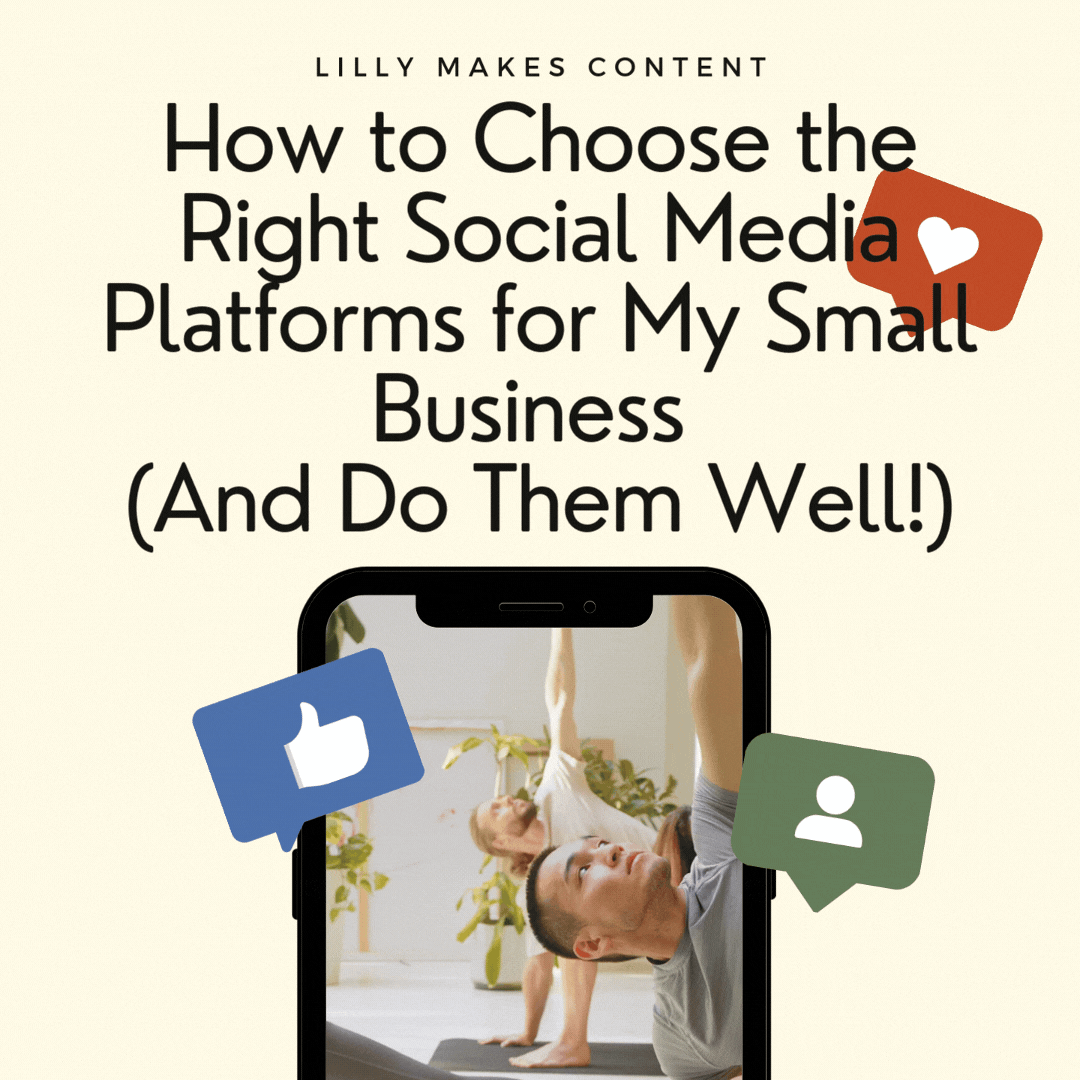Blog
How to Choose the Right Social Media Platforms for Your Small Business (And Do Them Well!)
As a small business owner, social media can feel like a never-ending task that takes away from the core activities you’re already juggling. Between managing your products or services, customer interactions, and all the behind-the-scenes work, it’s easy to see how social media can become overwhelming.

You might find yourself stuck in one of two camps:
- Reluctant: You're so overwhelmed that you don’t use social media at all, or
- Overenthusiastic: You try to manage every platform available, and end up spreading yourself too thin, unable to fully engage or do justice to any of them.
If you’re not sure where to start, don’t worry! I’ve been there, and I’m here to help you simplify things. By keeping a few key factors in mind, you can start building a social media strategy that works for you, not against you.
1. Think About Your Customer Profile and Where You Can Meet Them
The first step to choosing the right platforms is to think about who your target audience is and where they spend their time online. Not all platforms are created equal, and different social networks attract different demographics.
- Instagram tends to be popular with younger audiences (18-34) and businesses in visually-driven industries like fashion, food, and lifestyle.
- LinkedIn is ideal for B2B businesses or service-based industries looking to connect with professionals.
- Facebook remains a strong platform for a broad age range and is great for community-building or local businesses.
- TikTok has exploded in popularity with Gen Z and millennial consumers, particularly if your business is in entertainment, beauty, or has a creative edge.
- Pinterest works wonders for businesses in the DIY, fashion, interior design, and wedding industries.
Do a little research into your customers: What platforms are they using? Where do they engage with similar brands? This should guide your decision on where to focus your efforts.
2. Think About Your Marketing Objectives
Once you have a clearer picture of where your audience hangs out, consider why you're using social media. Your marketing objectives will play a big part in determining which platform to focus on. Are you looking to:
- Drive traffic to your website? Facebook and LinkedIn are great for linking out to blog posts, product pages, or special offers.
- Build a community? Instagram and Facebook groups are perfect for engaging with your audience and building relationships.
- Showcase products or services visually? Instagram, Pinterest, and TikTok are all fantastic for visual storytelling.
- Generate leads? LinkedIn is the go-to platform for lead generation and professional networking, while Facebook offers advanced targeting options for ads.
By aligning your platform choice with your business goals, you’ll be able to focus your efforts where it counts the most.
3. Choose a Few Platforms You Can Manage Within Your Workload
It’s easy to get carried away trying to be everywhere at once, but if your workload is already stretched, it’s best to start small and work your way up.
Focus on one or two platforms that align with your goals and customer base. You don’t need to be on every social network to make an impact; instead, pick platforms that will allow you to do them well.
For example, if you’re running a local coffee shop, Instagram and Facebook could be your main focus, with occasional posts on TikTok if you have the capacity. If you run a digital service or a consultancy, LinkedIn might be your most valuable space for thought leadership and connecting with potential clients.
If you try to take on too many platforms, you risk spreading your efforts too thin and not providing enough consistent, quality content to engage your audience. It’s much better to master one or two platforms than to half-heartedly manage five.
4. Create a Plan of Activity So You Can Stay Consistent
Consistency is key to social media success, but I know it can be hard to keep up with a regular posting schedule when you're managing everything else. Here’s the trick: Create a plan that works for your schedule.
- Content Calendar: Map out the type of content you want to post and when, so you’re not scrambling every week to come up with new ideas.
- Batch Your Content: Spend a few hours each week or month creating posts in advance. This will help you stay ahead of the game and give you more time to focus on running your business.
- Repurpose Content: Don’t reinvent the wheel. Repurpose your content across different platforms, or reuse older posts that still resonate with your audience.
Staying consistent doesn’t mean you have to post every single day. Find a frequency that fits your capacity and sticks with it.
Final Thoughts
Social media can definitely feel like a time-sink if you don’t have a clear plan in place. But with the right approach, it can become a valuable tool to connect with your audience and grow your small business. Focus on choosing the platforms that make sense for your audience and goals, and manage them in a way that fits into your workload.
By focusing on a few platforms, setting clear goals, and staying consistent with your efforts, you’ll start to see your social media strategy paying off without feeling overwhelmed.
Click here to download 10 FREE social media content ideas to get your platforms started!